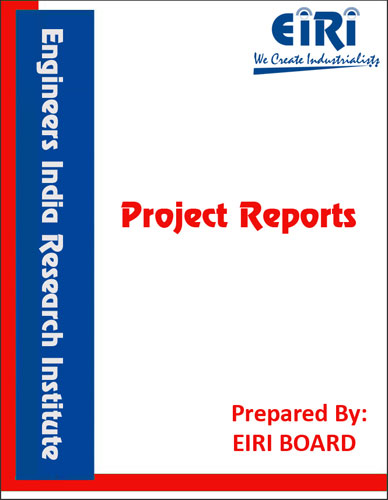PET RECYCLING UNIT (Cap: 2000 Kg/Day)
The project report includes Present Market Position and Expected Future Demand, Market Size, Statistics, Trends, SWOT Analysis and Forecasts. Report provides a comprehensive analysis from industry covering detailed reporting and evaluates the position of the industry by providing insights to the SWOT analysis of the industry.
We can prepare PROJECT REPORT as per your INVESTMENT PLAN for BANK LOAN REQUIREMENT and INDUSTRY ANALYSIS. All reports are prepared by highly qualified consultants and verified by a panel of experts.
Have Query? Click Here to Chat
Industry Expert is Online, Chat with him for more detail.

Nowadays, PET bottles are the global number one in beverage packaging. More than 400 billion plastic bottles come on the market every year and PET is becoming increasingly valuable as a recyclable raw material used in the production of beverage bottles. Thus, it is important that all of the production steps applied for the manufacture of your PET bottles are made sustainable for the future.
The gentle treatment of resources and economical use of materials are a must when it comes to sustainable production.
Valuable raw materials such as PET must be processed as efficiently as possible while still tapping into every way of saving costs. The PET manufacturing and production process allows for the application of a sustainable approach which can optimally combine environmental awareness and cost effectiveness: the bottle-to-bottle recycling concept.
Bottle-to-bottle recycling plant efficiently recycles used PET bottles – and the recyclate is then reused in the food and beverage industry as recycled PET (rPET). The complete process comprises the cleaning of the used PET bottles and the treatment of the recyclate so that the end product – which could come in the form of flakes, pellets or preforms – can meet the highest quality requirements after the recycling process. European and American certificates (e.g. FDA), and a number of different corporate approvals, all confirm the high quality of the recyclate for direct use in containers which come into direct contact with foodstuffs.
Food-grade PET flakes and pellets
• Recycling plant produces food-grade PET. With it, returned PET bottles can be reused to make new PET bottles. The use of recyclate has clear economic and ecological benefits.
Flakes, pellets or performs
• The procedure gives you the freedom to decide which end product you wish to create. The decontamination step required for the material’s later contact with foodstuffs is only ever performed with flakes. Afterwards, the flakes are either used directly or are made into pellets. Another extremely energy-efficient use for the decontaminated flakes is the direct feeding of the material into an extrusion process – Worldwide, PET-bottles more and more replace glass bottles in the beverage andood sector. The success of PET in comparison to glass is based on several economic (and environmental) advantages.
On the one hand, the production of PET is less expensive and energy consuming than the production of glass. Secondly, the light weight of the PET-bottle makes it easier for merchants and consumers to handle the bottles and crates. It saves energy during transport, particularly on long distance haulage. Finally, PET offers
more or less the same material properties as glass regarding hygiene, taste and gas impermeability.
INTRODUCTION
HISTORY OF PET
PROPERTIES & CHARACTERISTICS
USES AND APPLICATION OF PET
RECYCLING OF PET BOTTLES
CLEAR PET FLAKE – BOTTLE SPECIFICATION
MARKET SURVEY
FUTURE PROSPECT FOR PET RECYCLING
US RECYCLED PLASTIC DEMAND, 2006-16
MARKET SURVEY OF PRODUCTS MADE FROM RECYCLED PET
PRODUCTION AND INSTALLED CAPACITY OF POLYSTER STAPLE FIBRE
IN INDIA
CONSUMPTION OF POLYSTER STAPLE FIBRE IN INDIA
EXPORT DATA OF PET FLAKES
FINISHED PRODUCTS THAT CAN BE MADE FROM PET RECYCLED
GRANULES OR FLAKES
MARKET POSITION OF INDIAN PLASTICS
OVERVIEW OF PLASTIC RECYCLING1
ADDRESSES OF PET RECYCLING UNIT
MANUFACTURERS/SUPPLIERS OF PET GRANULES
ADVANCEMENT AND PRACTICES IN PET RECYCLING
POST CONSUMER PET WASTE
PROCESS OF PET RECYCLING UNIT
SEQUENCES OF OPERATION INVOLVED IN PET RECYCLING UNIT
MANUFACTURING PROCESS IN DETAILS
PROCESS FLOW DIAGRAM
LOWERING THE COST OF PET RECYCLING THROUGH BETTER
LABEL TECHNOLOGY
PLANT LAYOUT
PRINCIPLES OF PLANT LAYOUT
PLANT LOCATION FACTORS
EXPLANATION OF TERMS USED IN THE PROJECT REPORT
ADDRESSES OF CONSULTANT
SUPPLIERS OF PLANT AND MACINERIES
SUPPLIERS OF PLANT & MACHINERIES (IMPORTED)
SUPPLIERS OF RAW MATERIAL
APPENDIX – A:
1. COST OF PLANT ECONOMICS
2. LAND & BUILDING
3. PLANT AND MACHINERY
4. FIXED CAPITAL INVESTMENT
5. RAW MATERIAL
6. SALARY AND WAGES
7. UTILITIES AND OVERHEADS
8. TOTAL WORKING CAPITAL
9. COST OF PRODUCTION
10. PROFITABILITY ANALYSIS
11. BREAK EVEN POINT
12. RESOURCES OF FINANCE
13. INTEREST CHART
14. DEPRECIATION CHART
15. CASH FLOW STATEMENT
16. PROJECTED BALANCE SHEET



